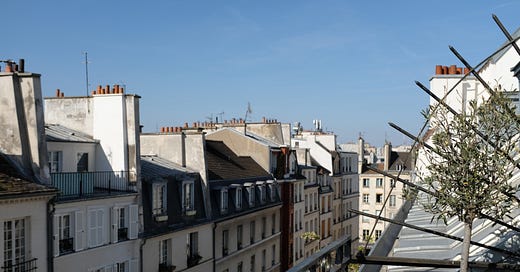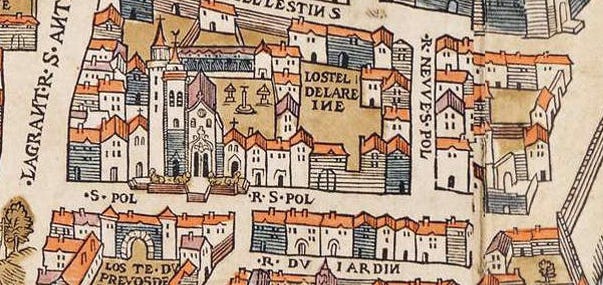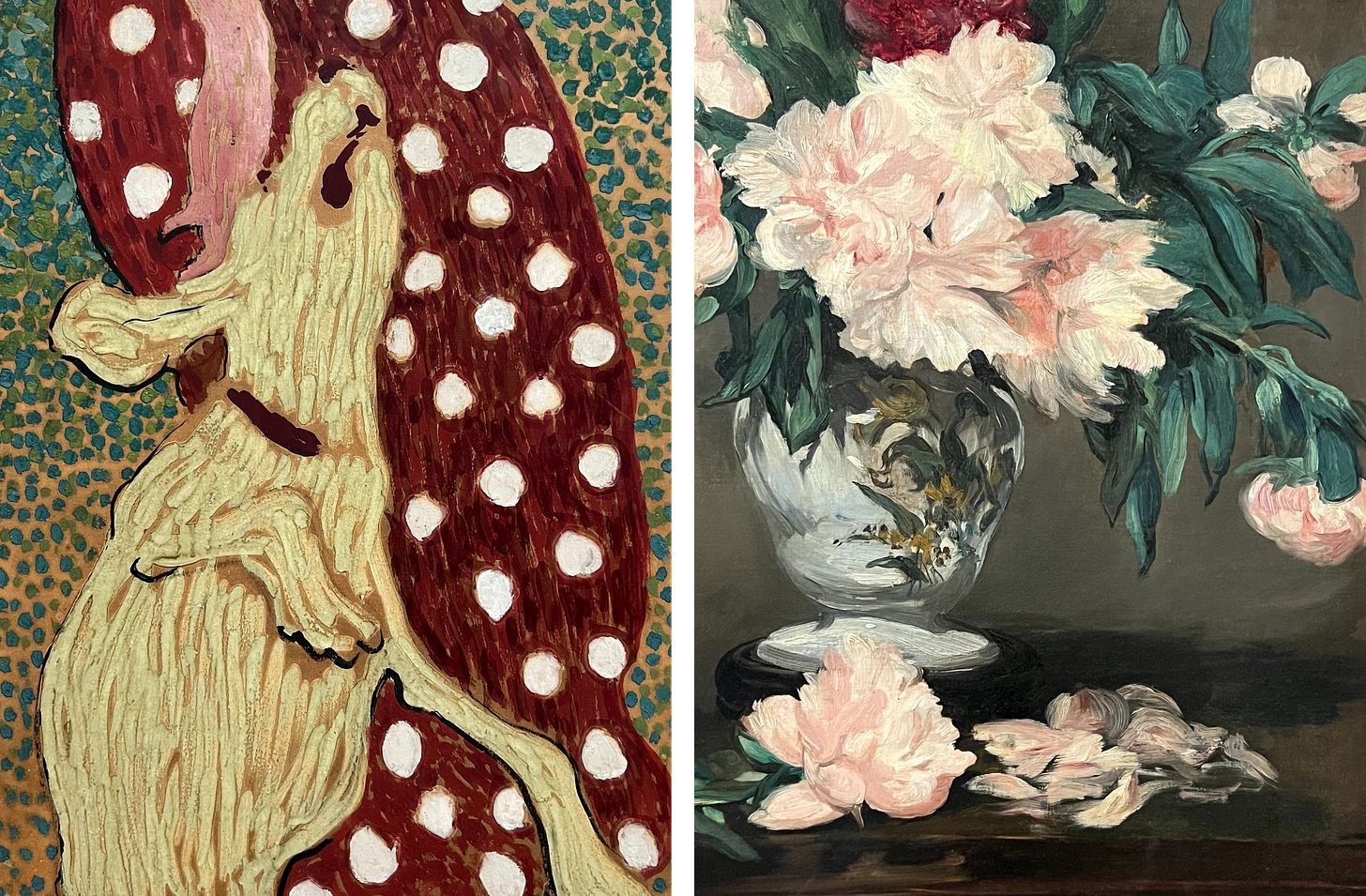As of today, I’ve been in Paris for three weeks. I’m subletting an apartment in the Marais perched high on the 6th floor (no elevator!) with a private terrace that offers spectacular views of the iconically Parisian rooftops that surround me. I’m mere blocks from Place des Vosges and a quick two minute walk from the Seine. In the daytime, I can spot the spire of Notre Dame from my terrace. At night, the searchlight atop the Eiffel Tower spins in the sky and the hot spot where the tower sits is just obstructed by a neighboring building seen through my kitchen window.
Three fromageries are within one minute of my home, and so I’m eating cheese that makes me swoon every single day. There’s a boulangerie on the corner, another across the street, yet another a few doors down. My go to greengrocer has the most flavorful strawberries I’ve ever tasted, and supplies eight different types of grapes for snacking. The four small blocks that make up the entirety of my street are a wonderful amalgamation of restaurants, cafés, boutiques, specialty shops, and artisans. While I have lived in many cities, I’ve never lived this deeply in the heart of a city, and am outrageously happy to be so immersed in the vibrant beauty of Paris.
In my first week here, I stopped into the Musée Carnavalet, a museum dedicated to the history of Paris. Amongst the antique signs, furniture, and oil paintings, I came across a mid-18th century map of the city, and was awed to see my street perfectly defined. I shouldn’t have been. As it turns out, it’s existed since at least the 7th century, and has borne the name Rue Saint-Paul since 1350.
The exact spot on which my building sits was once a church and cemetery. First established around 632-642, the original chapel was replaced by a church in 1125, and eventually became a royal parish in the 14th century, Église Saint-Paul-des-Champs. Charles IV was baptized there. In the 15th century, his successor Charles VII commissioned a stained glass window of Joan of Arc to be installed to celebrate the end of English occupation. One year into the French Revolution, the church closed and transitioned into a meeting room and depot for stripping the gilding and metals from royal coaches seized from Versailles. Post-revolution, the church was demolished and my building and the one next door were erected.
All that remains is one wall facade from the bell tower that hugs the side of the apartment building adjacent to mine, and the 1627 clock that now adorns the facade of the Église Saint-Paul Saint-Louis just around the corner. It’s a clock so striking that it stopped me in my tracks when I first spotted it a year and a half ago. I had no idea then that I’d eventually live nearby and look out at the dome of the Église Saint-Paul Saint-Louis every single day. As for the cemetery, it was one of the oldest and largest in Paris, with “hundreds of thousands of people buried there from the 7th century until its closure at the end of the 18th century.” I try not to think too much about the unfathomable number of ghosts likely circulating around me as I type this.
There’s so much I want to say about springtime in Paris, and what this experience means to me, but in short: it’s invigorating on every level and makes me feel utterly alive. It’s hard to articulate what a transformative few weeks this has already been — I’m still collecting my words. So for now, I’d like to share a visual smattering of the delicious delights that have brought me joy upon my initiation into Parisian living…
The tranquility of the Seine and the Île Saint Louis at 8am, enjoyed whilst en route to a transcendent croissant from Boulanger de la Tour.
Bows! Made of icing, tying up chocolates, in girls’ hair, blowing in the wind.
The produce and cheese displays at the greengrocer and fromagerie around the corner from my apartment, conveniently next door to one another.
The trimmings shelves at Ultramod Mercerie and the pastel drawers in Sennelier.
Quintessentially Parisian cafes and the ever present evening revelers relaxing along the quays of the Seine.
The brushwork and color palettes of Pierre Bonnard and Édouard Manet.
Sainte-Chapelle! Yes the stained glass windows get all the fuse, but every last 700-year-old Gothic detail deserves a round of applause. I had the opportunity to linger through the unreal experience of attending a classical music concert with two old friends on their first night in town.
The notion of an Amazonian waterlily’s fine detailing being hammered into silver to create the most luxurious dustpan I’ve ever seen, and Tony Bouilhet’s portrait of a young Gio Ponti at the start of his legendary career, both spotted at the Musée des Arts Décoratifs.
Intricate carvings and tile work at the Grand Mosque, most stunning in the tranquil gardens overflowing with blooming wisteria.
Claude Monet’s colorful home and gardens at Giverny. Utter perfection!
I mean really, two and a half acres of tulips?! We should all be so lucky.



















Arriving in June and simply cannot wait.
Katie, do you speak French?